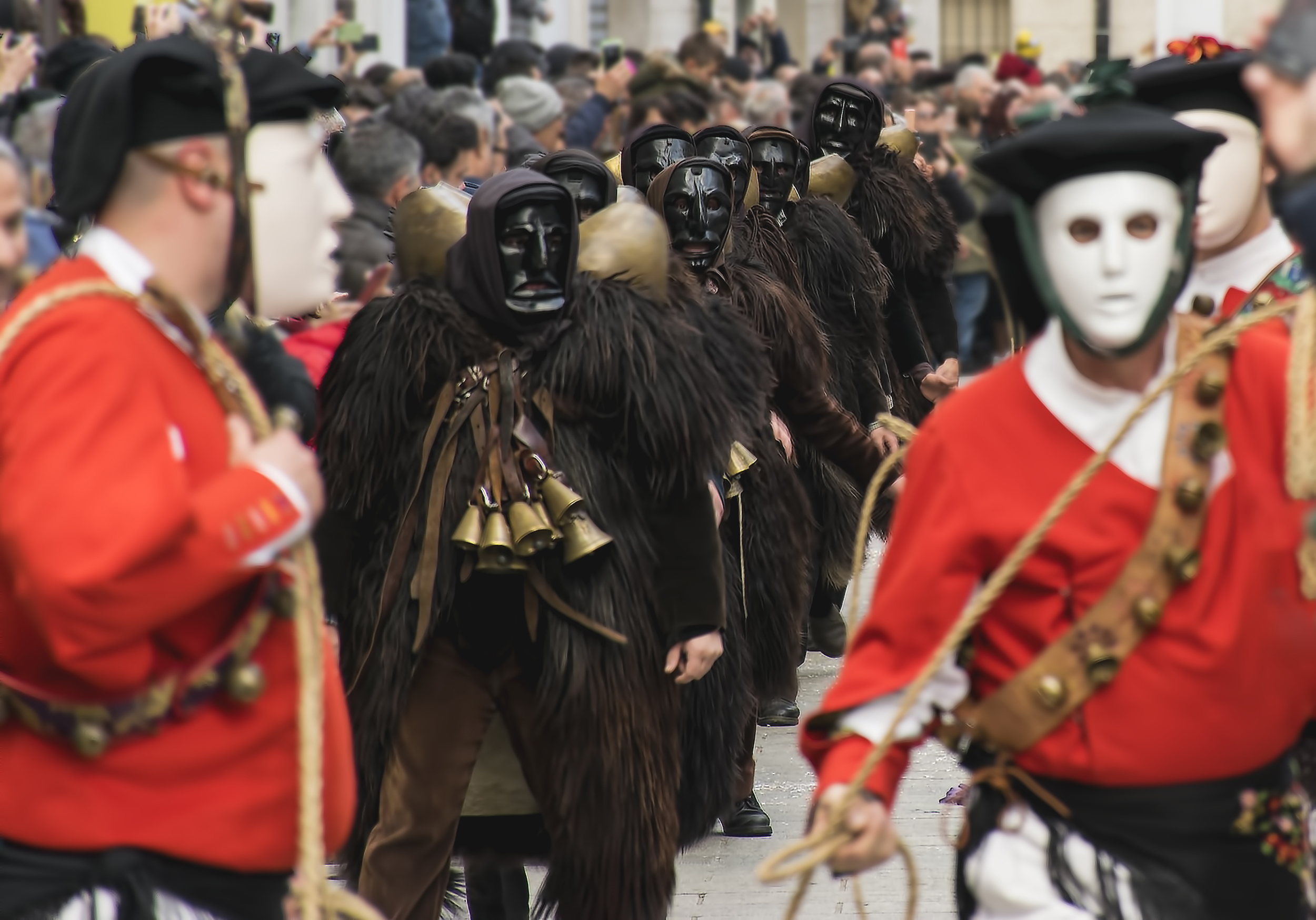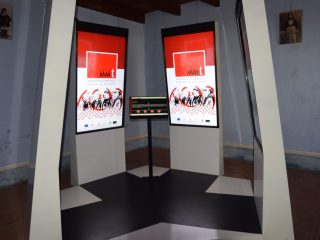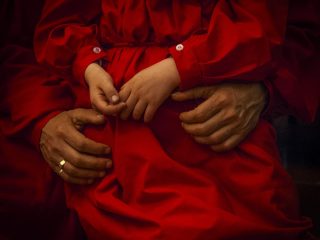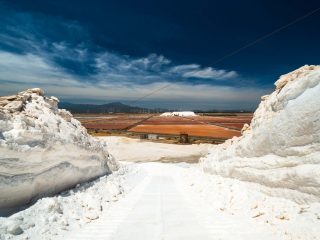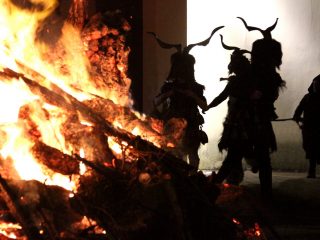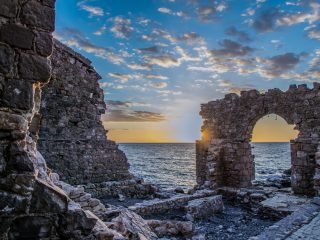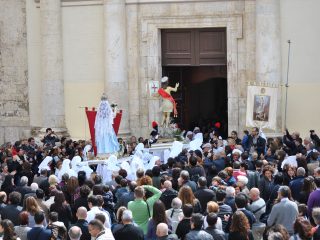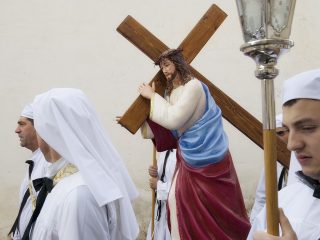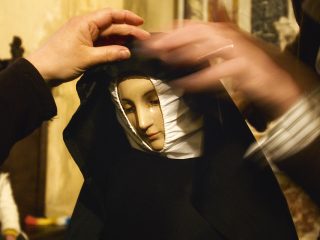Mamoiada is a small village in the area of Barbagia in Ollolai, a few kilometres from Nuoro and close to the Gennargentu Massif. This is the town of the Mamuthones, typical mask of Mamoiada and one of the symbols of Sardinian culture. The Carnival of Mamoiada is one of the oldest traditions on the island and one of the best-loved even today.
The Mamuthones wear velvet clothes, a large cape made of sheep or goat’s skins and a dark hood to cover the head; they carry cowbells (“sos sonazzos”) weighing around 30 kilos, tied on their back with leather strings, while smaller, lighter bells hang round their neck. Their face is covered with a black mask produced from pear wood “sa visera”, depicting a face with a suffering and frightened expression.
As well as the Mamuthones, however, the carnival of Mamoiada features the Issohadores masks. They wear a white linen shirt, a red tunic, white socks and a fully embroidered woman’s shawl. Completing the costume are the copper and bronze rattles which they wear around their neck and the white mask resembling a human and less unsettling than the Mamuthones one; this mask is known as “sa visera ‘e santu”. They then wear a hat (“sa berritta”) held on by a multi-coloured handkerchief tied under the chin.
Like all the traditional carnivals in Sardinia, it starts on 16 January, the day when the first apparition of Mamuthones and Issohadores masks appear. The real celebrations take place over the three days of carnival (Sunday, Monday and Mardi Gras) along the streets in the old town centre.
On those days, the Mamuthones parade in groups of twelve, representing the twelve months of the year, following the beat given by the Issohadores. Each of the Issohadores holds a wicker tie in their hand (known as “sa soha”, and from where the name of the mask derives). It is used to try and capture someone who is not wearing a mask and take them prisoner.
In the olden days, it was common to capture and imprison some of the wealthiest members of the community, belonging to nobility, to bring them great wealth; to free themselves, the prisoners offered wine and food to all those present. Nowadays, the tendency is to capture young girls, to ensure fertility, or local authorities to hope for a good year within the community. The Mamuthones walk slowly following a rhythmic movement, a kind of dance which aims to fend off evil.
The parade seems to be the representation of the transhumance ritual, with the Issohadores who impersonate the shepherds leading the animals from the mountain to the plateau, even throwing ropes.
The origins of the carnival of Mamoiada are still unknown to this day. According to some, it might date back to the Nuragic era and the “dance” performed by the Mamuthones may originally have been aimed at propitiating a plentiful harvest, considering the period when the ritual is performed: when winter is being left behind and spring is on the way. There are also clear hints of Dionysus rituals here which were performed in ancient Greece. According to legend, the Mamuthones represent the Moors captured by the Sardinians during incursions onto the island.


